SNVSAU4C September 2018 – April 2024 LM5164
PRODUCTION DATA
- 1
- 1 Features
- 2 Applications
- 3 Description
- 4 Pin Configuration and Functions
- 5 Specifications
-
6 Detailed Description
- 6.1 Overview
- 6.2 Functional Block Diagram
- 6.3
Feature Description
- 6.3.1 Control Architecture
- 6.3.2 Internal VCC Regulator and Bootstrap Capacitor
- 6.3.3 Regulation Comparator
- 6.3.4 Internal Soft Start
- 6.3.5 On-Time Generator
- 6.3.6 Current Limit
- 6.3.7 N-Channel Buck Switch and Driver
- 6.3.8 Synchronous Rectifier
- 6.3.9 Enable/Undervoltage Lockout (EN/UVLO)
- 6.3.10 Power Good (PGOOD)
- 6.3.11 Thermal Protection
- 6.4 Device Functional Modes
- 7 Application and Implementation
- 8 Device and Documentation Support
- 9 Revision History
- 10Mechanical, Packaging, and Orderable Information
7.2.3 Application Curves
 Figure 7-2 Conversion Efficiency (Log Scale)
Figure 7-2 Conversion Efficiency (Log Scale)

| VIN = 24 V | IOUT = 0 A |
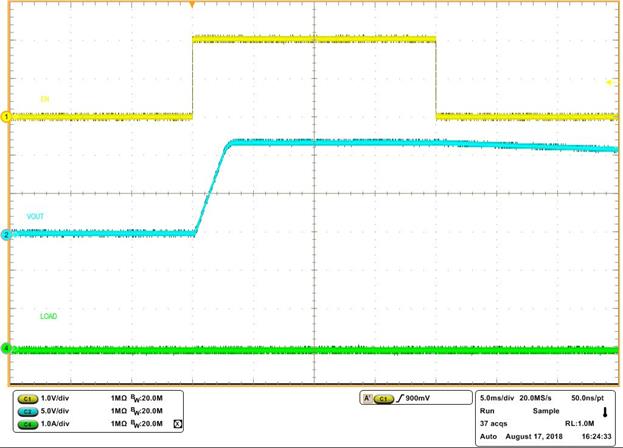
| VIN = 24 V | IOUT = 0 A |
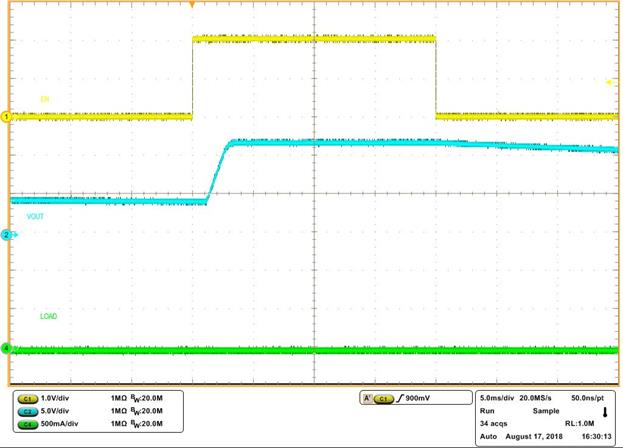
| VIN = 24 V | IOUT = 0 A |

| VIN = 24 V | Load = Short to 0 A |

| VIN = 24 V | IOUT = 0 A |

| VIN = 48 V | Load = 1 A | Rsnub = 1 Ω, Csnub = 680 pF |
 Figure 7-3 Conversion Efficiency (Linear Scale)
Figure 7-3 Conversion Efficiency (Linear Scale)
| VIN = 24 V | IOUT = 0.25 A to 1 A at 0.1 A/μs |

| VIN = 24 V | IOUT = 1 A (Resistive) |
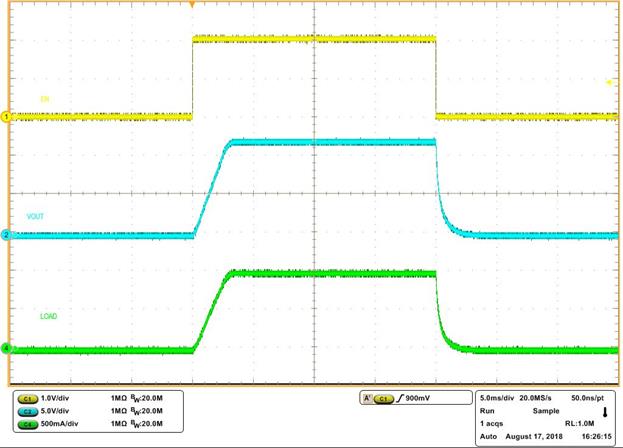
| VIN = 24 V | IOUT = 1 A (Resistive) |

| VIN = 24 V | Load = 0 A to Short |
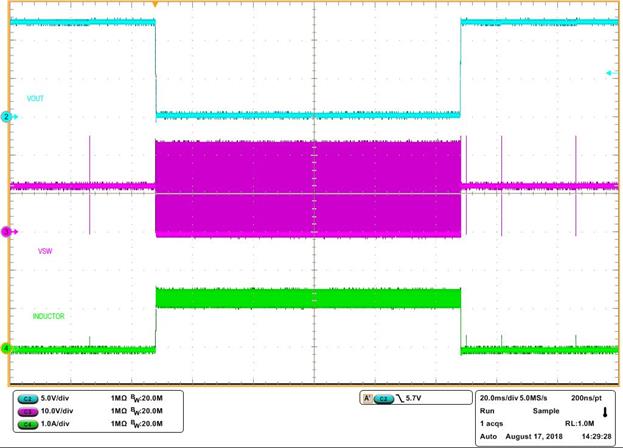
| VIN = 24 V | Load = 0 A to Short to .0 A |
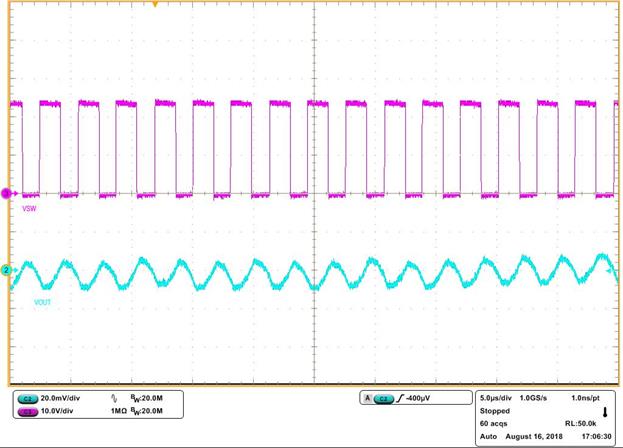
| VIN = 24 V | IOUT = 1 A |

| VIN = 48 V | Load = 1 A | Rsnub = 1 Ω, Csnub = 680 pF |